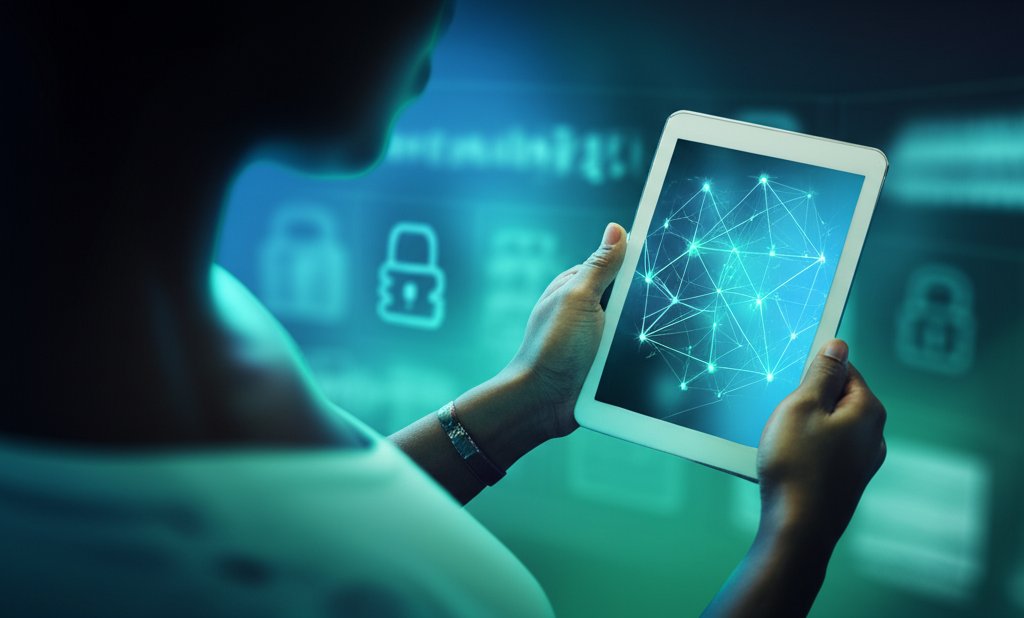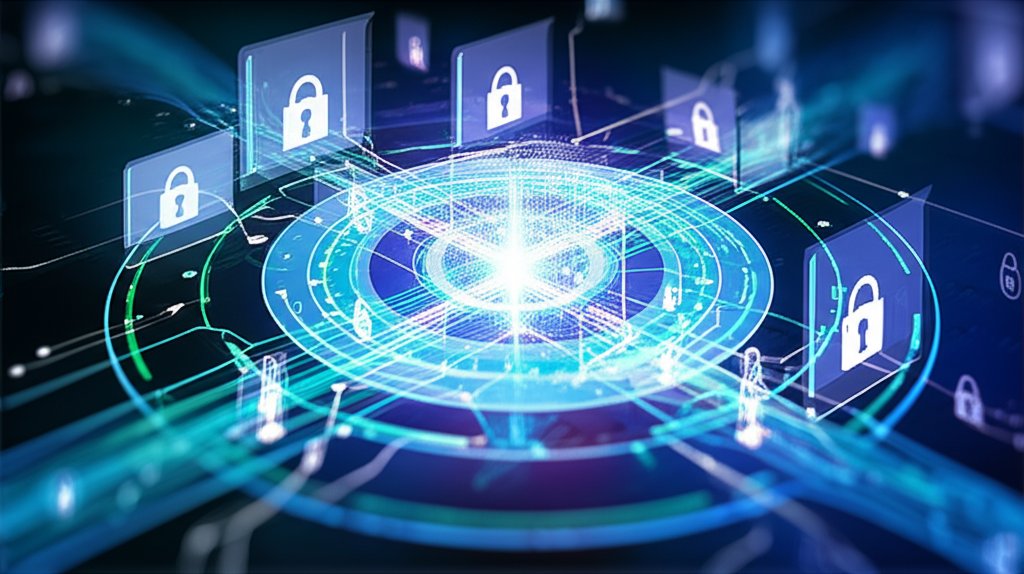Unlock Safer Logins: How Zero Trust Enhances Your Identity Protection Strategy
In today’s interconnected digital landscape, every online interaction, from a simple login to sharing sensitive data, presents potential cybersecurity risks. Cyber threats like phishing, data breaches, and ransomware are no longer confined to large enterprises; they actively target individuals and small businesses. We all seek peace of mind in our digital lives, yet traditional security models often fall short.
The outdated approach assumes that once you’re “inside” a network, you can be trusted. But what happens when that trust is compromised, or worse, exploited? This is where Zero Trust Architecture (ZTA) and robust Identity Management (IAM) become indispensable. These two powerful strategies work in tandem to create a formidable defense, empowering you to take definitive control of your digital security. This article will demystify Zero Trust’s role in protecting your identity, explain its critical importance, and provide clear, actionable steps to fortify your online defenses. For a deeper dive into the truth about Zero Trust and why it’s more than just a buzzword, continue reading.
Table of Contents
- What is Zero Trust Architecture (ZTA)?
- What is Identity Management (IAM)?
- Why are traditional “perimeter” security methods falling short today?
- How do Zero Trust Architecture and Identity Management work together?
- What are the core Zero Trust principles applied to my digital identity?
- How does Zero Trust protect against common cyber threats like phishing or data breaches?
- Can small businesses or individuals implement Zero Trust without a huge budget?
- What are simple, actionable steps to start implementing Zero Trust principles for my digital identity?
- What are some common myths about Zero Trust that I should ignore?
- How does Zero Trust specifically help secure remote and hybrid work environments?
Basics
What is Zero Trust Architecture (ZTA)?
Zero Trust Architecture (ZTA) is a security strategy founded on the principle of “never trust, always verify.” Instead of granting implicit trust to users or devices simply because they are “inside” a network, ZTA treats every access attempt as if it originates from an untrusted, external environment, demanding explicit verification before access is granted.
Consider ZTA akin to modern airport security, but for your digital life. You cannot simply walk onto a plane just because you’ve entered the airport terminal. You must present identification, a boarding pass, and undergo thorough screening every single time you wish to proceed to the gate. ZTA applies this rigorous, continuous verification to every user, every device, every application, and every data request, regardless of its origin. It represents a fundamental shift from the antiquated “moat and castle” security model to a dynamic, adaptive posture where nothing is inherently trusted.
What is Identity Management (IAM)?
Identity Management (IAM) is the robust framework that controls who can access what within your digital ecosystem. Its purpose is to ensure that only authorized individuals and devices can gain access to the specific data, systems, or applications they need, and nothing more.
For an everyday user, IAM encompasses practices like managing strong, unique passwords, activating multi-factor authentication (MFA) for critical services like banking, or carefully reviewing app permissions on your phone. For a small business, IAM is crucial for controlling employee access to sensitive customer databases, financial software, or shared documents, ensuring that the right personnel have the appropriate level of access precisely when it’s required. For instance, a marketing team member might need access to social media tools but not financial records, or a new hire only needs access to their departmental drives, not HR’s confidential files. IAM establishes the foundational knowledge of who is asking for access.
Why are traditional “perimeter” security methods falling short today?
Traditional security, often termed “perimeter-based,” operates on the flawed assumption that everything inside your network is inherently safe, while everything outside is dangerous—much like a medieval castle protected by a moat. This outdated approach is failing today because the digital “perimeter” has effectively dissolved with the rise of remote work, extensive cloud service adoption, and widespread use of mobile devices.
If an attacker manages to breach this perimeter—for example, through a sophisticated phishing attack that compromises an employee’s credentials—they often gain relatively free rein inside the network. There’s an inherent trust given to anything once it’s “in.” Imagine a scenario where an employee clicks a malicious link, and their login details are stolen. In a traditional setup, once the attacker uses those credentials to bypass the initial firewall, they often have unrestricted access to internal file shares, databases, or even critical financial systems. This leaves you vulnerable to “lateral movement” by attackers, who can then easily access sensitive data, deploy ransomware, or cause significant damage. The idea of a single, defensible perimeter simply doesn’t hold up in our distributed, boundary-less digital landscape anymore.
Intermediate
How do Zero Trust Architecture and Identity Management work together?
Zero Trust Architecture and Identity Management form an essential synergy, with IAM serving as the central pillar of a comprehensive Zero Trust strategy. IAM provides the “who” (the verified identity), and ZTA provides the “how” for continuous, explicit verification before granting access to resources.
ZTA doesn’t just rely on a one-time login. Instead, it continually verifies the user’s identity, assesses the device’s health, and evaluates contextual factors (like location, time of day, and type of data requested) for every single access request. Your identity becomes the primary control plane. IAM systems manage these identities and their associated attributes, making it possible for ZTA to enforce granular, dynamic access policies. Think of it this way: your IAM system identifies ‘Sarah from Marketing.’ When Sarah tries to access the company’s customer relationship management (CRM) software, ZTA doesn’t just say ‘Sarah is logged in.’ It asks: ‘Is Sarah accessing from her company-issued laptop? Is that laptop up-to-date and free of malware? Is she logging in from her usual location at a normal business hour? Does she actually need access to this CRM data for her current task?’ Only after verifying all these factors is access granted, even if she’s sitting at her desk inside the office. Together, they ensure that every request for access—whether from an employee, a vendor, or an application—is explicitly authenticated and authorized, even if that request comes from within what was once considered a trusted network segment.
What are the core Zero Trust principles applied to my digital identity?
When it comes to securing your digital identity, Zero Trust revolves around three foundational principles: Verify Explicitly, Use Least Privilege Access, and Assume Breach. These principles serve as a robust guide for how you manage and protect who has access to what within your digital world.
- Verify Explicitly: This principle dictates that you never implicitly trust any user or device. Instead, you continually ask, “Are you truly who you say you are, accessing from a known, healthy device, from an expected location, at a normal time, and with a legitimate business need?” This goes beyond a single password check and often involves strong authentication methods like Multi-Factor Authentication (MFA) and real-time assessment of device health. For example, if you log into your banking app, ‘Verify Explicitly’ means it asks for your password and a code from your phone, and perhaps even flags if you’re logging in from a country you’ve never visited before, prompting additional checks.
- Least Privilege Access: This means granting individuals and devices only the bare minimum access necessary to perform their specific job functions or complete a designated task, and nothing more. If an employee only needs to view a specific folder, they should not have permissions to modify it or access unrelated sensitive data. For personal use, it translates to being highly mindful of the permissions you grant to smartphone apps. Consider a new intern who might need read-only access to certain project documents, but certainly doesn’t need administrative access to critical servers or the ability to delete core financial data. Similarly, your flashlight app doesn’t need access to your contacts list.
- Assume Breach: This mindset means operating under the constant assumption that an attacker may already be present in your environment, or that a breach is an inevitable possibility. This perspective drives continuous monitoring for suspicious activity, proactive planning to limit potential damage, and a complete rejection of fully trusting any single point of security. This principle means that even if a user is authenticated, their activities are still monitored. If ‘John’ suddenly tries to download the entire customer database at 3 AM from an unusual IP address, the ‘Assume Breach’ mindset triggers an alert, because that behavior is suspicious, even if his credentials are valid.
How does Zero Trust protect against common cyber threats like phishing or data breaches?
Zero Trust significantly enhances protection against pervasive threats like phishing and data breaches by eradicating implicit trust and enforcing continuous, explicit verification. Even if an attacker successfully steals your credentials through a phishing attempt, ZT’s “never trust, always verify” approach can often stop them dead in their tracks.
With ZT, stolen credentials alone are rarely sufficient for an attacker to gain meaningful access. Because every access request is explicitly verified, the attacker would likely be blocked if they tried to log in from an unrecognized device, an unusual geographical location, or without the required second factor of authentication (MFA). Consider a phishing attack where an employee, David, unknowingly gives away his username and password. In a Zero Trust environment, when the attacker tries to log in as David, they’d likely be challenged for a second factor (MFA) they don’t possess, or the system would flag an unusual device/location, denying access. Even if they somehow bypass the initial login, the principle of ‘least privilege access’ would severely limit their lateral movement within your systems, preventing them from accessing sensitive data beyond the initially compromised account. This significantly reduces the potential damage of a breach, turning what could be a widespread compromise into an isolated, contained incident. Zero Trust makes it exponentially harder for attackers to move through your digital space even after gaining an initial foothold.
Can small businesses or individuals implement Zero Trust without a huge budget?
Absolutely! Zero Trust is fundamentally a strategy and a mindset, not a suite of prohibitively expensive products. Its core principles are highly adaptable and can be implemented cost-effectively by individuals and small businesses using existing tools and smart practices. You don’t need enterprise-level budgets to begin significantly enhancing your security posture.
For individuals, adopting Zero Trust principles means taking personal responsibility for your digital footprint with proactive, yet simple, measures:
- Enable Multi-Factor Authentication (MFA) everywhere: This is the single most impactful step. Most major online services (email, banking, social media, shopping) offer free MFA. It adds a critical second layer of verification, making stolen passwords far less useful to attackers.
- Use strong, unique passwords and a password manager: Never reuse passwords. A free or low-cost password manager (e.g., Bitwarden, LastPass free tier) can generate and store complex passwords for you, ensuring each account has a unique key. This embodies ‘Verify Explicitly’ and ‘Assume Breach’ for individual credentials.
- Be vigilant about app and device permissions: Regularly review what permissions apps on your phone or computer have. Does that game need access to your location or microphone? Revoke unnecessary access to practice ‘Least Privilege.’
- Keep software and devices updated: Enable automatic updates for your operating system, web browser, and all applications. Updates often include critical security patches that close vulnerabilities attackers exploit.
- Recognize and report phishing attempts: Train yourself to spot suspicious emails or messages. If something looks off, don’t click. Delete it or report it. This reduces the initial breach vector. For more insights into critical email security mistakes, explore our guide.
For small businesses, the goal is to formalize these practices across your team, often by leveraging cloud-based services you might already use:
- Centralize Identity Management: Utilize an existing identity provider like Google Workspace, Microsoft Entra ID (formerly Azure AD), or a dedicated SSO/IAM solution (some offer free/basic tiers). This allows you to manage all user accounts, access rights, and MFA policies from a single dashboard, simplifying ‘Verify Explicitly’ and ‘Least Privilege’.
- Enforce Multi-Factor Authentication (MFA) company-wide: Mandate MFA for all employees on all company systems and cloud applications. Many centralized identity providers make this easy to implement and enforce.
- Implement Least Privilege Access: Define and regularly review access rights for every employee. A graphic designer doesn’t need access to financial records, and a sales associate doesn’t need administrative access to servers. This significantly limits potential damage if an account is compromised.
- Secure Endpoints (Devices): Ensure all devices accessing company data (laptops, phones) have antivirus/anti-malware software, are kept up-to-date, and are encrypted. Many operating systems include built-in encryption and firewalls (e.g., BitLocker for Windows, FileVault for macOS).
- Segment your Network (simply): Even basic segmentation can help. For instance, put guest Wi-Fi on a separate network from your business-critical systems. This limits an attacker’s ability to move freely if they gain initial access.
- Employee Security Awareness Training: Regularly educate your team on common threats like phishing, social engineering, and safe browsing practices. Human awareness is one of your strongest, most cost-effective defenses.
- Regular Data Backups: While not strictly a Zero Trust principle, maintaining secure, offsite backups is crucial for resilience (‘Assume Breach’). If ransomware strikes, you can restore your data without paying the ransom.
By focusing on these practical, often free or low-cost steps, both individuals and small businesses can build a robust Zero Trust foundation. It’s about consciously verifying every interaction and limiting access, rather than relying on outdated assumptions of safety.
Advanced
What are simple, actionable steps to start implementing Zero Trust principles for my digital identity?
Implementing Zero Trust principles for your digital identity is an ongoing process, but you can achieve significant security gains by focusing on these practical, impactful steps. Remember, even small changes add up to a stronger defense.
-
Mandate Multi-Factor Authentication (MFA) Everywhere:
- Action: Go through all your critical online accounts (email, banking, cloud storage, social media, business applications) and enable MFA. Prioritize accounts that could lead to financial loss or identity theft.
- How: Choose strong MFA methods like authenticator apps (e.g., Google Authenticator, Authy), hardware security keys (e.g., YubiKey), or SMS (as a last resort). For businesses, enforce MFA across your entire organization via your identity provider.
- Example: If an attacker steals your password, they’ll still be blocked because they don’t have your phone to provide the one-time code generated by your authenticator app.
-
Practice and Enforce Least Privilege Access:
- Action for Individuals: Regularly review app permissions on your smartphone, tablet, and computer. Ask yourself if an app truly needs access to your camera, microphone, or contacts. Revoke any unnecessary access.
- Action for Small Businesses: Create clear roles and assign access rights strictly based on job function. For example, a new sales team member needs access to the CRM and sales drive, but not the accounting software or HR files. Use groups within your identity provider to simplify management.
- How: When a new app is installed or an employee joins/changes roles, perform an immediate access review. Revoke access as soon as it’s no longer needed.
- Example: If a compromised marketing account tries to access sensitive customer credit card data, least privilege ensures that account doesn’t have the necessary permissions, preventing a data breach.
-
Gain Visibility and Monitor for Anomalies:
- Action for Individuals: Check the “activity log” or “security settings” sections of your major online accounts (Google, Microsoft, Facebook, banking) regularly for unfamiliar logins or suspicious actions.
- Action for Small Businesses: Implement logging for all access attempts to critical systems and data. Monitor these logs for unusual patterns: logins from strange locations, attempts to access highly sensitive data outside business hours, or excessive failed login attempts.
- How: Many cloud services offer built-in auditing features. Set up alerts for suspicious activities. Ensure all endpoints (laptops, desktops) have up-to-date antivirus/EDR solutions and firewalls.
- Example: If your banking app alerts you to a login attempt from a city you’ve never visited, or your business identity provider flags 50 failed login attempts on an employee’s account within minutes, these are immediate indicators of a potential threat.
-
Leverage Centralized Identity and Access Management (IAM) Tools:
- Action for Small Businesses: Consolidate user identities and access policies using a single, unified IAM platform.
- How: Services like Google Workspace, Microsoft Entra ID (formerly Azure AD), Okta, or Duo Security offer robust features for managing identities, enforcing MFA, and applying granular access controls across multiple applications. This reduces administrative overhead and strengthens your overall Zero Trust posture by centralizing the ‘who’ and ‘what’ of access.
- Example: Instead of managing separate usernames and passwords for your email, project management tool, and CRM, a centralized IAM system allows employees to use one secure login (SSO) to access all approved applications, while you maintain oversight and control from a single dashboard.
What are some common myths about Zero Trust that I should ignore?
Zero Trust can sound intimidating, leading to several misconceptions that might prevent you from adopting its valuable principles. Let’s clear up a few of the most common myths:
-
Myth 1: “Zero Trust is too expensive or complex for small businesses.”
Reality: While enterprise-level ZT deployments can be extensive, the core principles are adaptable and scalable. As we’ve discussed, you can start with fundamental, cost-effective steps like MFA, least privilege, and regular access reviews. It’s a strategic journey, not a single destination, and you can implement it incrementally. -
Myth 2: “Zero Trust means you can’t trust your employees.”
Reality: This isn’t about distrusting people; it’s about not implicitly trusting any access request, regardless of its origin. It protects your employees by making it harder for attackers to impersonate them or leverage their compromised accounts. It builds a more resilient and secure environment for everyone, where your team can work with confidence. -
Myth 3: “Zero Trust is a product you can buy off the shelf.”
Reality: Zero Trust isn’t a single product; it’s a comprehensive security strategy and a philosophical shift in how you approach digital defense. There are many tools that help implement ZT principles (like IAM solutions, MFA, endpoint detection and response platforms), but the architecture is about how you integrate these tools and change your security mindset across your entire digital ecosystem. -
Myth 4: “Zero Trust will make everything harder for users.”
Reality: While security always requires some effort, modern ZT implementations often aim for a seamless user experience. With Single Sign-On (SSO) and adaptive authentication, users can often experience smoother access once initial verification is done, while behind the scenes, continuous checks are happening. It’s about making security intelligent and unobtrusive, not just burdensome.
How does Zero Trust specifically help secure remote and hybrid work environments?
Zero Trust is exceptionally well-suited for remote and hybrid work environments because it inherently recognizes that users, devices, and data can be anywhere, removing the dangerous assumption of safety based on a physical network location. It extends robust security beyond traditional office perimeters.
In a remote or hybrid setup, employees access company resources from various locations—often from personal devices—and over potentially insecure home or public networks. Fortifying remote work security is crucial, and Zero Trust directly addresses these challenges by requiring explicit verification for every access attempt, regardless of whether the user is in the corporate office or working from a coffee shop. It ensures that only authenticated users on authorized, healthy devices can access specific applications or data, preventing unauthorized access even if a personal device is compromised. This “anywhere, anytime” verification protects your sensitive data and critical systems wherever your team chooses to work, making flexible work models far more secure and sustainable.
Related Questions
- How can I improve my personal online security beyond passwords?
- What is multi-factor authentication (MFA) and why is it important?
- How do I manage access for contractors or temporary staff in my small business?
- What are the best practices for securing my company’s cloud-based applications?
- How often should I review my digital account permissions?
Conclusion
The digital landscape is constantly evolving, and so too must our approach to security. Zero Trust Architecture, when combined with strong Identity Management, offers a powerful, adaptive way to protect your digital identity, your personal data, and your small business operations. It’s a crucial shift from trusting by default to verifying explicitly, every single time.
You don’t need to be a cybersecurity expert or have an unlimited budget to start. By implementing practical steps like enabling MFA, practicing least privilege, and actively monitoring your access, you can significantly enhance your security posture and gain greater peace of mind. It’s about taking control and empowering yourself against ever-present cyber threats.
Ready to strengthen your defenses? Don’t wait for a breach to act. Start small, but start today. Enable MFA on your most critical accounts, review app permissions, and embrace the ‘never trust, always verify’ mindset. Your digital security is within your control, and by taking these practical steps, you empower yourself and your organization against the evolving threat landscape.









